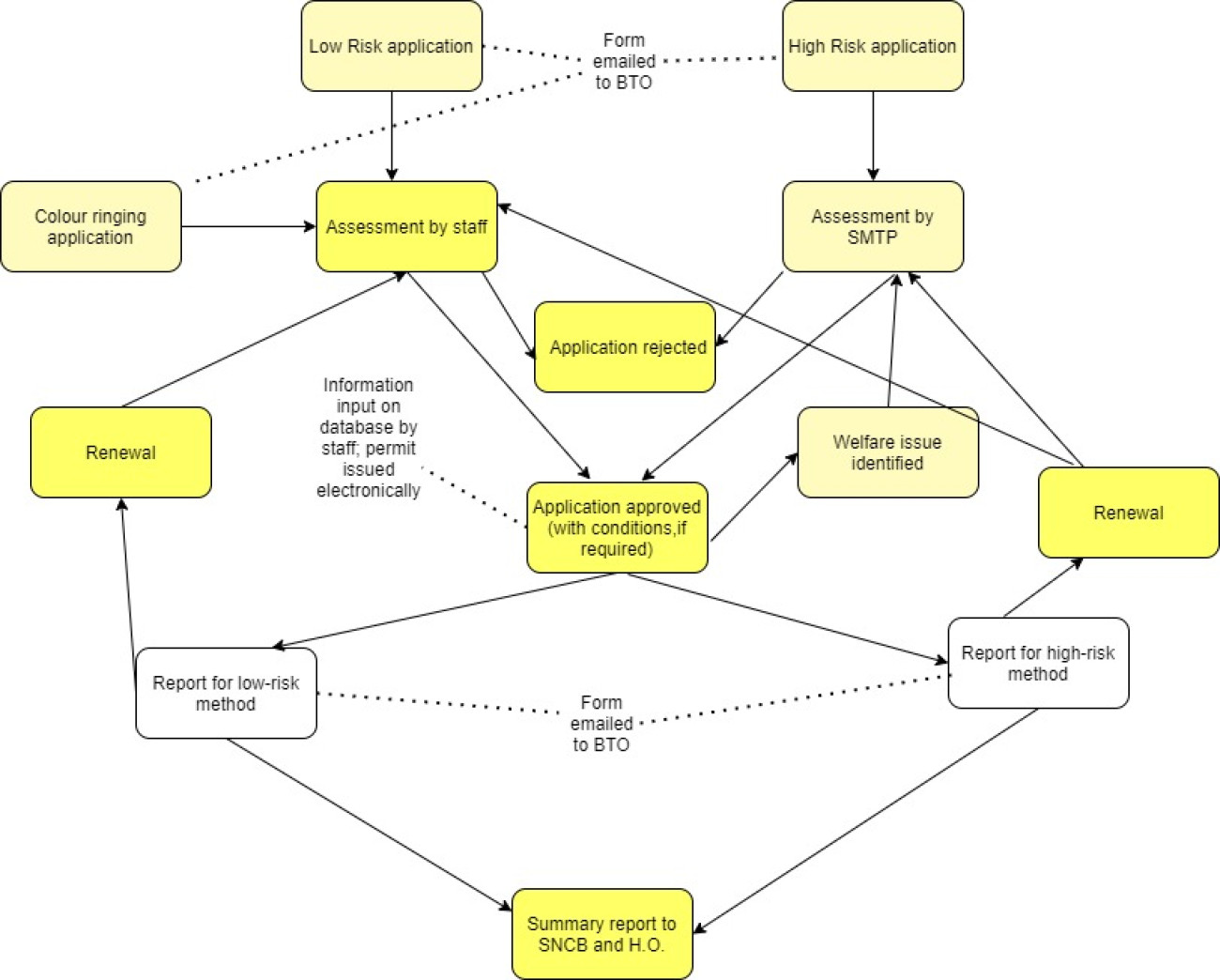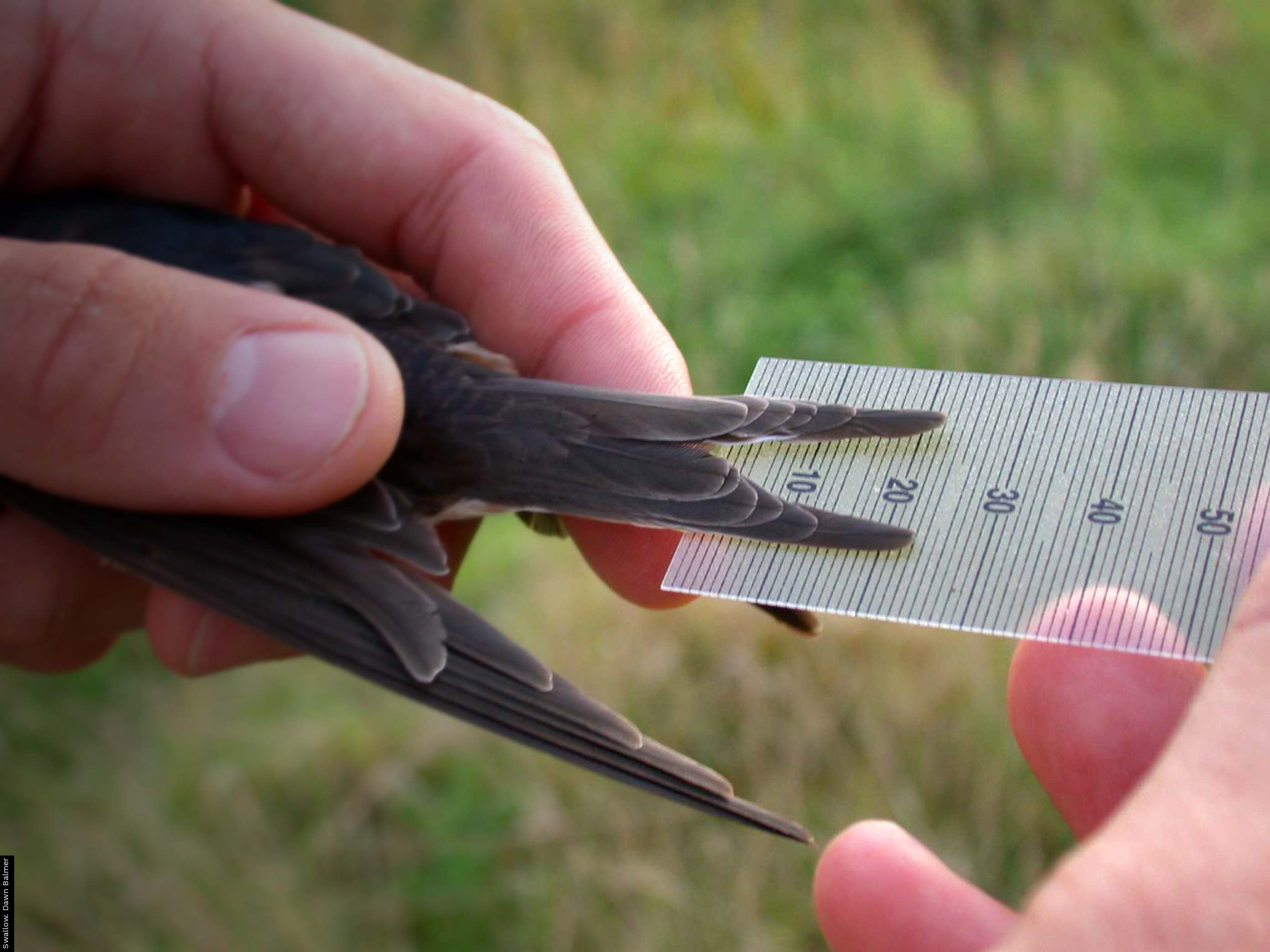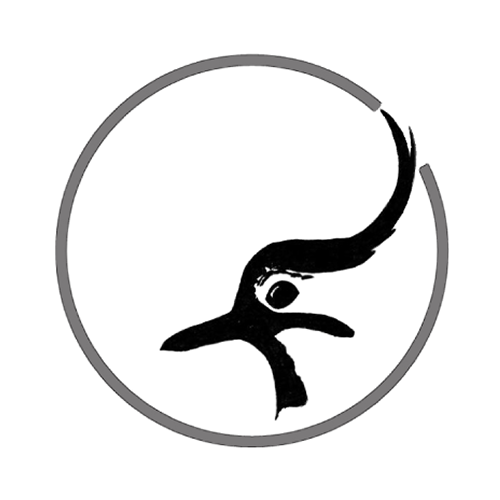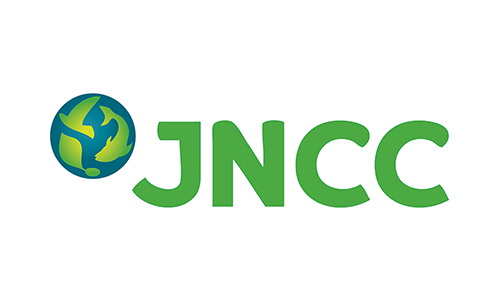How we license marking and sampling methods
Special Methods projects
A ‘Special Method’ is defined as any technique that involves the marking and/or fitting of any device other than a standard BTO metal ring, or the use of a non-conventional trap, as defined by the Ringers’ Manual. There are currently 45 defined Special Methods, 10 of which relate to traps, six to tissue sampling, one to modifying metal ring fit, nine to colour marking and 19 to tagging. Each Special Method is assigned to a ‘Low’, ‘Medium’, ‘High’ or ‘Very High’ risk category through discussion with the Home Office.
Each application to use a Special Method is treated as an individual project, which must be approved initially and then formally renewed each year thereafter. Any proposed changes to an approved project, however minor, must be formally identified in advance and may require a new application to be made. Each project has a named project lead, who takes overall responsibility for meeting the conditions set, and each lead may also have named agents who are authorised to work
Licensing
The aim of the Special Methods licensing process is to determine whether the potential welfare impacts of the trapping, marking or tracking technique being proposed are likely to fall below the ‘lower threshold’, as defined in the Animal Scientific Procedures Acts 1986 (as amended) (ASPA). Any activity generating impacts that are likely to exceed this threshold requires an ASPA licence to be issued by the Animals in Science Regulation Unit (ASRU) of the Home Office.
Governance
The potential for activities to exceed the ASPA lower threshold is assessed by the independent Special Methods Technical Panel (SMTP), a subcommittee of the BTO Ringing Committee that operates to a formal Terms of Reference. The panel is convened by the BTO Licensing Officer but consists entirely of volunteers with extensive relevant experience (practitioners and vets), who have responsibility for all of the decisions concerning approval; the SMTP Chair is appointed by the BTO Board. The SMTP Chair and BTO staff produce a written report for the Home Office each year, summarising approved projects and the feedback received via the reporting process, which is discussed at the annual BTO/Home Office meeting. Details of approvals are also included in the annual Licensing Report produced for the UK’s Statutory Nature Conservation Bodies (SNCBs).
The application process
All applications are initially made to the BTO Licensing Officer; the route of subsequent consideration is dependent on the level of potential risk associated with the combination of Special Method and species (see below). Ringers developing a project proposal that utilises a Special Methods technique are encouraged to seek advice from the BTO Licensing Team at an early stage in their planning, especially if the project involves a method that is not commonly used on the target species. All applicants are asked to complete a detailed form highlighting the i) project aims, ii) location, iii) people involved in all aspects of fieldwork and their relevant experience, iv) proposed sample size for each combination of species, sex and age, and v) the technical detail of the Special Method to be employed.
Consideration and approval of applications
All applications are considered in relation to three criteria: a) the risk of harm to the birds being studied, b) the potential for the proposed technique to deliver the expected data, and c) the potential for data delivered to be of sufficient value to justify approval. Technology and techniques evolve rapidly, and particular attention is given to novel methods, novel devices and the application of established methods/devices to novel species. The route of consideration is dependent on the level of risk associated with the Special Method, which is reviewed at the annual BTO/Home Office meeting; any process involving the BTO Licensing Officer is undertaken according to guidance given by SMTP.
- Low risk (e.g. colour marks and feather clipping) – considered by the BTO Licensing Officer.
- Medium risk (e.g. swabbing, feather sampling,) – considered by the BTO Licensing Officer.
- High risk (e.g. wing tags, glued/taped devices, ring/flag/collar mounted devices) – considered by SMTP unless a similar project has already been approved, in which case approved by the BTO Licensing Officer.
- Very High risk (e.g. necklaces, harness-mounted devices) – considered by SMTP.
Panel members vary in their specialisms, so not all will necessarily review every application, but a project needs to be supported by at least two members, plus the Chair, for approval to be granted. For higher risk and/or novel methods, the process may be discursive, with SMTP requesting further information from the applicant and, if required, steering them towards more appropriate alternative techniques.
Approval is only granted on condition that applicants have been suitably trained. Ideally, all training would be provided face-to-face in the field by an experienced practitioner, but passive training (e.g. via written instruction or online tutorial) is acceptable for low risk methods and both training and assessment for medium risk methods may be undertaken over video. Training for Medium and High risk methods requires one-to-one field tuition from an experienced practitioner and a supporting reference from the trainer is required as part of the application.
Once a decision has been reached, the outcome is communicated to the applicant by the BTO Licensing Officer; if the project has been approved, the applicant will receive a structured email that sets out any mandatory modifications to the proposed project protocol, e.g. reductions in sample sizes, limitations concerning sex/age of birds, and the reporting conditions. An appropriate endorsement will be added to the BTO ringing permit of all individuals named as lead or agents on the application. Possession of the endorsement records the ability of the permit holder to undertake the method safely, and will remain on the permit as a record of this skill; the method cannot be used, however, unless the permit also displays the relevant project permission, detailing the species and method involved, which will be removed once the project has ended. All permits are then reissued by the BTO Licensing Team.
Reporting and renewal
A report that meets the conditions outlined in the approval must be made by the end of the licensing year in which the activity requiring the Special Method permissions was completed but the SMTP is at liberty to request further data at any point for the purposes of monitoring welfare. Reporting is undertaken using a standard set of forms; if no report is received, or if the reporting conditions have not been met, the project permissions will not be renewed. Reports are reviewed initially by the BTO Licensing Officer, who flags any potential issues to the SMTP; all reports relating to Very High risk methods are passed to the SMTP routinely, as are any that they have asked for specific sight of on approval. BTO, SMTP and the Home Office meet annually to discuss any issues identified through the reporting process.
Requests for renewal of permissions are made at the reporting stage. If the methodology is unchanged and no issues have been identified, permission is granted but any proposed changes must be considered by the BTO Licensing Officer/SMTP as appropriate in advance and, if significant, may require a new application to be made.











Share this page